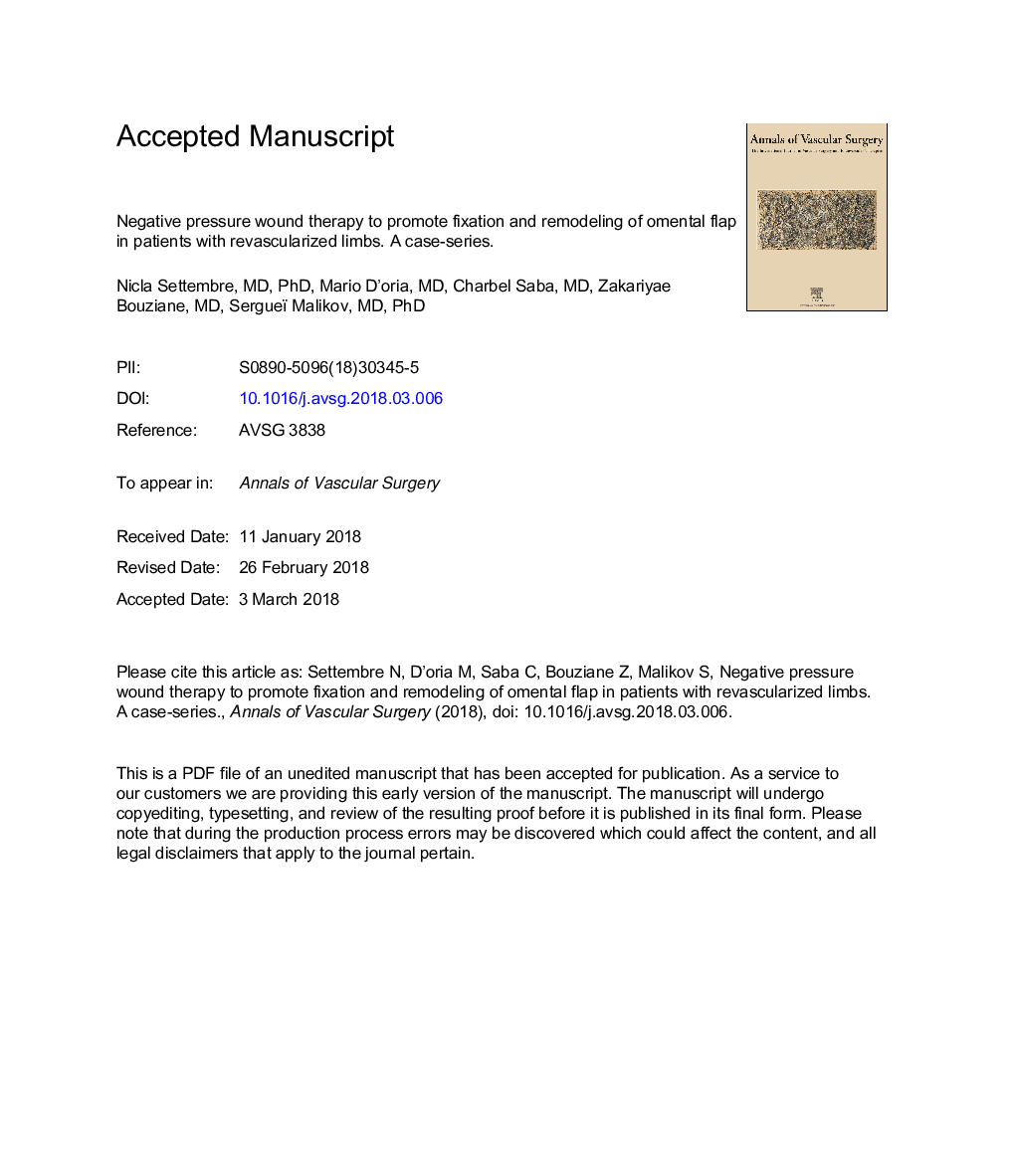| Article ID | Journal | Published Year | Pages | File Type |
|---|---|---|---|---|
| 8962856 | Annals of Vascular Surgery | 2018 | 13 Pages |
Abstract
We present our experience with 5 patients with chronic limb threatening ischemia (CLTI) treated with distal revascularization and omental flap coverage. We decided to investigate the efficacy and safety of negative-pressure wound therapy (NPWT) in promoting the fixation and remodeling of the omental flap as there is some evidence in the literature about the optimization of results for skin graft and dermal substitutes. Surgical revascularization was always the first procedure attempted; wound coverage was realized 3-5Â days after the primary procedure (omental free-flap in 3 patients and omental flow-through flap in 2 patients). NPWT with small foam at â75Â mm Hg was applied on the second postoperative day after flap coverage. Effective remodeling of the flap was defined as the flap overcoming the wound edge no more than 10Â mm. Limb salvage rate was 100%; in all the patients, and we observed satisfactory fixation and remodeling of the omental flap after 10-20Â days of NPWT, secondary skin grafting within 3-4Â weeks after revascularization, and adequate and complete mobilization within 6Â months after hospital discharge. We did not report any relapsing infection nor any recurrent wound up to 2Â years of follow-up. Distal revascularization combined with omental free-flap or flow-through flap is highly effective for limb salvage in CLTI patients with complex wounds. NPWT may be an useful adjunct to promote fixation and remodeling of the omental flap before secondary skin grafting. It may reduce secondary issues related to omental flap coverage allowing rapid and satisfactory mobilization of patients.
Related Topics
Health Sciences
Medicine and Dentistry
Cardiology and Cardiovascular Medicine
Authors
Nicla Settembre, Mario D'oria, Charbel Saba, Zakariyae Bouziane, Sergueï Malikov,
